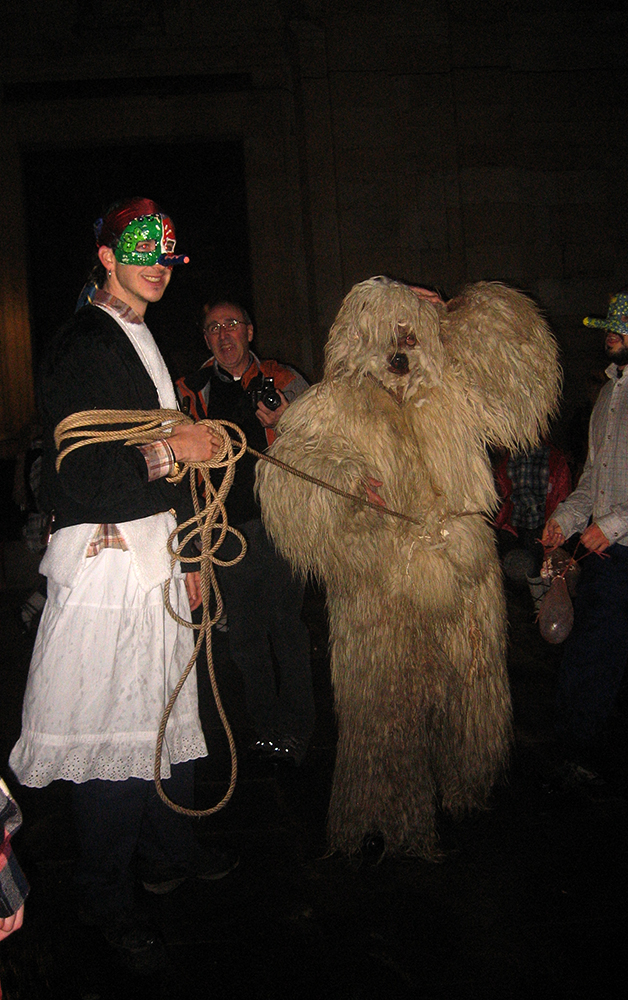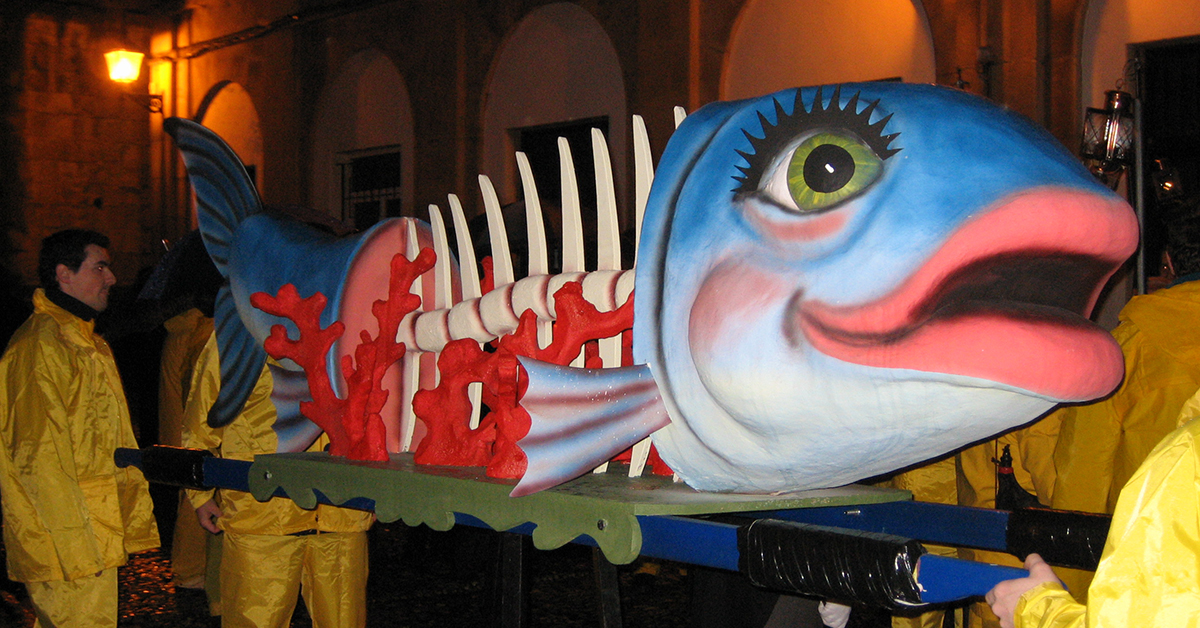Basque ethnography at a glance
The testimonies of interviewees from Bizkaia[1] take us back to the late 19th and early 20th centuries, a time of ups and downs (military conflicts, dictatorships, ideological changes, civil and ecclesiastical censorship…) for our traditional Carnival (Karnabalak, Aratusteak, Carnestolendas…), as far as its significance and popularity were concerned. Carnival is, shall we state, a period which combines fixed festive celebrations and variable dates (determined by the first full moon of Easter), contextualized between the Christmas cycle and the Lenten quarantine which heralds Easter.
According to direct witnesses, the Carnival period began with the first servings of eggy bread at Candlemas (2 February), or Kandelario, and ended on Piñata Sunday (first Sunday of Lent). St Blaise’s and St Agatha’s festivities might or might not be considered part and parcel of this festive cycle. The ritual outing to the woods on Sexagesima Sunday, known as Basa(ra)toste, Sasikoipetsu or Kanporamartxo, featured roasted (txitxi-burduntzia) or pan-fried (sartenekoa) foods. Fat Thursday, or Eguen Zuri, used to be a day off school for children, devoted to get-togethers and games. And the main social events of this cheerful season followed on Shrove Sunday, Shrove Monday and Shrove Tuesday.
The streets of villages, towns and cities would be flooded with masked characters in disguise (mascaritas, kokomarroak, errabiak, puxikeroak, atorrak, surrandiak…), running around anarchically, chasing or whipping[2] playful children and innocent women, throwing confetti or other items, playing endless pranks, jumping and dancing, while keeping their identity to themselves with feigning gestures and voice. Elder folks were frightened by their ghostly presence (bestekoak ‘from the beyond’, they were said to be), and the thought of masks permanently stuck to the face haunted a good many minds.
Carnival activities involved children asking for alms (Eguen Zuri or Carnestolendas). Scenic, musical and dance troupes of youngsters performed in exchange for food or money, sold their satirical songs and even pulled off the pettiest of petty thefts, always up to some mischief, half-earnestly, half-jokingly. By-products of the pig slaughter (black pudding, chorizo, bacon, trotters and ears…) and the very customary fried bread or custard dessert were most typical of this celebratory period.
Games (oilar-jokoa ‘game of the rooster’, antzar-jokoa ‘game of the goose’, greasy poles, al higuí —catching a fig hanging from a stick—, txakolin —skipping alternately through the four segments formed by two crossed sashes or sticks laid on the ground— …), other amusements (sokamuturrak —running of roped young bulls—) and ritual dances (Zaragi-dantza ‘Dance of the wineskin’, Sorgin-dantza ‘Dance of witches’ and Marroen Aurreskua ‘Aurresku of the masked’) were commonplace during the three Shrove days. However, the most widespread and eagerly anticipated element of the Carnival would indeed be the countless dances held in public squares and private masked balls organized by associations, trade unions or casinos.
The flow of workers derived from the industrialization of the territory contributed to the introduction of new customs, such as the ‘burial of the sardine’, parody of a funeral procession which brought the marked revelry and joy of Carnival to an end, before plunging into an austere Lent; or Piñata Sunday, characterized by the organization of private dances.
Josu Larrinaga Zugadi – Sociologist
Translated by Jaione Bilbao – Ethnography Department – Labayru Fundazioa
[1] Larrinaga Zugadi, Josu. “Carnavales tradicionales en Bizkaia [Traditional Carnival in Bizkaia]” in Conferencias sobre los Carnavales en Euskal Herria [Lectures on the Carnival traditions of the Basque Country]. Bilbao: Euskal Museoa Bilbao Basque Museum, 2012/05/11. And Irigoien, Iñaki; Dueñas, Emilio X.; Larrinaga Zugadi, Josu. Ihauteriak. Carnavales [Carnival]. Bilbao: Euskal Museoa Bilbao Basque Museum, 1992.
[2] Larrinaga Zugadi, Josu. “Máscaras fustigadoras [Masks and cracking whips]” in Euskonews&Media 242. Donostia: Eusko Ikaskuntza, 2004/02/13-20. http://www.euskonews.eus/0242zbk/gaia24201es.html
The text is also accessible in Basque and Spanish, either by changing the language of the website or by clicking on the following links: Inauteriak Bizkaiko memoria kolektiboan and Carnavales en la memoria colectiva de Bizkaia.




